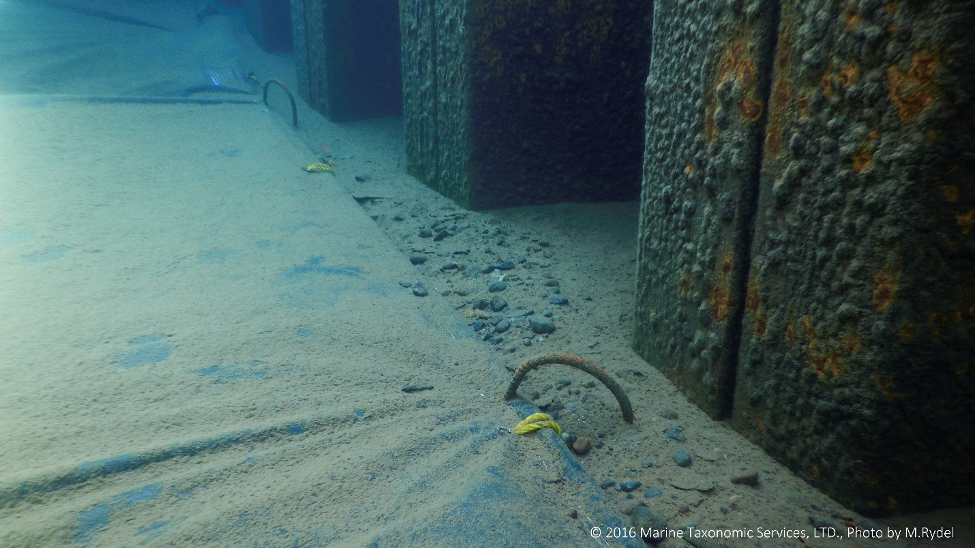Aquatic Invasive Plants (AIP) Control Methods
A variety of mechanical, biological and chemical methods have been used to control Eurasian watermilfoil across North America. Mechanical methods to reduce plant biomass such as harvesting, cutting, or mowing are often used in localized regions such as marinas or swim areas to clear navigation or recreation use zones. Unfortunately, these methods can promote the spread of plants because watermilfoil can grow from broken-off stems. For this reason, Tahoe RCD has focused on using a combination of bottom barrier installation, diver-assisted suction removal, and hand removal in Lake Tahoe.
Bottom Barriers
Synthetic bottom barriers are installed over the infestation and block out all light. The barriers are secured with rebar and left in place for a minimum of three months. Dependent upon environment, the barriers may be left in place for up to 18 months. This method is best used for well-established infestations in sheltered locations with a minimum of four feet water depth to avoid disturbance from wave action and boat traffic. Installation is carried out by certified divers and topside assistance is required to assemble barriers and maneuver the barriers in and out of the water.
The synthetic gas-permeable bottom barriers must be weighted down with rebar. Preparations include cutting rebar to length, carefully inserting rebar into sleeves on the bottom barrier, and bending additional rebar into u-shaped staples.
Under water, specially trained divers install the barriers on the lake bed. Each barrier is 10′ by 40′ and weighs approximately 56 lbs when dry; they are installed with an overlap to help deter new plants from growing between the barriers. The divers secure the barriers to the lake bed with the rebar “staples” to ensure water movement does not displace them.
Throughout the growing season, the dive team returns to the site to perform maintenance on the barriers and remove any new plants that grow at the perimeter of the barriers.
When it is time to remove the barriers, divers remove the rebar staples and lift the barriers up to the topside crew. The topside crew roll up the barriers and remove them from the water. The barriers can be reused for multiple seasons.

Diver-assisted suction removal
Under water, divers hand feed entire plants, including root systems, into a suction hose. The suction hose is mounted on a pontoon or watercraft, and the suction is powered by a gas motor.
The suction hose feeds invasive plant material into mesh bags. When the bags are full, divers remove the bags from the water and dispose of the material off site.

Hand Removal
Divers carefully remove the entire plant by hand, including all roots. If performed incorrectly, this method can lead to further spread of the plant through fragmentation, so expertise is required. It is generally used in conjunction with other methods to perform follow-up maintenance of a treated site, or in sparsely distributed infestations with immature plants that are not well-established.
This method is used in areas where plants are growing in a patchy distribution and also used to remove new growth outside of bottom barriers.
